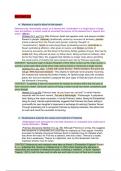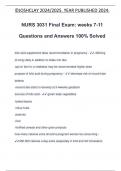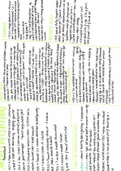Summary
Summary Edexcel English Lit A*: Unit 1 Drama Hamlet Essay plans
- Module
- Unit 1 - Drama
- Institution
- PEARSON (PEARSON)
I have compiled a very extensive and detailed document containing various essay plans for Shakespeare's Hamlet (e.g., madness, revenge etc.). Within each plan I have added detailed essay points to structure your essay around. These include quotations from the text (with page numbers for ease) and e...
[Show more]







